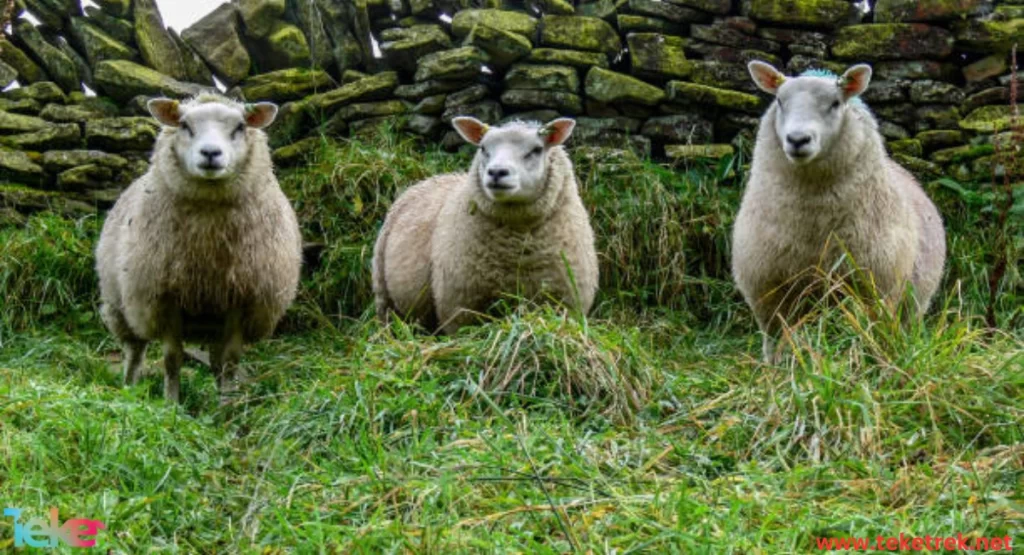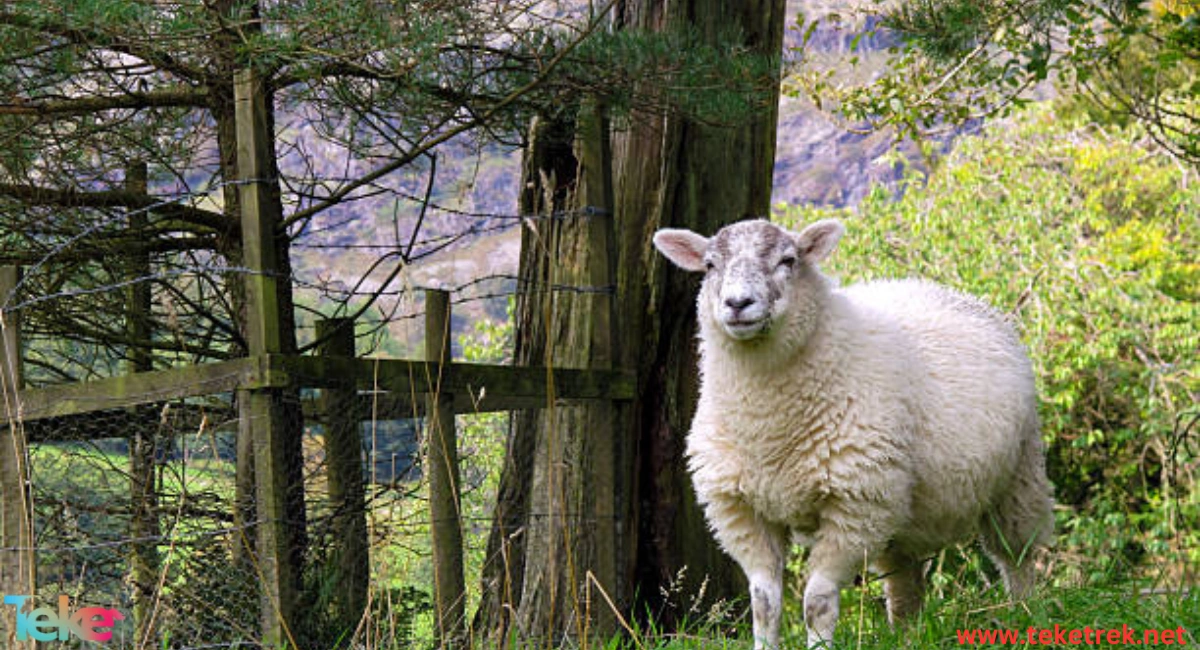It is a breed of domestic sheep originating from the United Kingdom, also known as Hampshire Down sheep.
It was developed around 1829 by crossing Southdowns with the Old Hampshire breed.
Let’s learn more about it from teketrek.
Facts about The Hampshire Down Sheep
The ancient Hampshire breeds include Wiltshire Horn and Berkshire Nott.
The breed is named after its place of origin, Hampshire County, located on the southern coast of England, an area known for its milder climate compared to many parts of Britain.

Hampshire Sheep characteristics
The shape: The Hampshire Down sheep is known for being large, muscular, and having deep, full-bodied frames, resembling cattle in the sheep world.
The Hampshire Sheep color: They have a white body with a dark face .
The ears: moderately long, slightly drooping ears.
The legs: Their legs are usually dark-colored, with some wool below the knees.
The horns: Rams and ewes are usually polled, meaning they do not have horns.
The Hampshire Sheep size: The average live body weight of fully grown Hampshire Down ewes is approximately 91 kg, while mature rams weigh around 120 kg.
https://teketrek.net/information-about-the-common-pleco-and-exciting-facts-about-it/
Features and Uses of Hampshire Down Sheep
Hampshire Down sheep are known for their hardiness and are well-suited to almost all climates.
They have a long breeding season, and ewes exhibit a high rate of multiple births.
Despite their active and large appearance, farmers describe them as calm and easygoing, which is an additional advantage for breeders and exhibitors.
Hampshire Down sheep are valued for their delicious meat and high-quality wool, making them suitable for dual-purpose farming.
They also grow and mature quickly.
Hampshire Down sheep have four chambers in their digestive system, ensuring easy and rapid digestion of their food intake.
An important fact about Hampshire Down sheep is that they have a very sharp memory and are capable of recognizing faces.
Habitat and diet of Hampshire Down Sheep
Hampshire Down sheep can be found in various habitats, including desert areas, highland regions, polar areas with very low temperatures, agricultural lands, and some associated facilities on farms.
Hampshire Down sheep can be nourished with grass, legumes, fodder, and forage plants.
Reproduction Stages of Hampshire Down Sheep
The gestation period for Hampshire Down sheep lasts approximately 150 days, and shepherds often monitor their ewes during this time.
The sheep can also be fed grains a few weeks before the expected pregnancy, as a lot of fetal growth occurs within the ewe’s womb.
It is recommended to provide one pound of grain per ewe and gradually increase the quantity, with the final amount depending on the breed and size of the ewe.
https://teketrek.net/exploring-the-amazing-characteristics-of-whales/
Key Features of Raising Hampshire Down Sheep
1 – Diverse production of meat, milk, wool, fur, and other by-products, including valuable organic fertilizer for agricultural lands.
2 – Rapid turnover of capital and achieving high profits in the shortest possible time.
3 – Low maintenance costs.
4 – Grazing efficiency, with the sheep having a great ability to graze on nearby grasslands.
5 – Suitability for hot regions and other areas worldwide, making it a prevalent animal globally.

FAQs about Hampshire Down Sheep
How to Maintain the Health of Hampshire Down Sheep?
The health of the flock and individual members is one of the most important factors for good production.
Sheep care differs from that of larger animals as it is collective rather than individual.
It primarily focuses on preventing diseases and parasites that can reduce the productivity of the flock and ensuring prompt treatment when needed.
What Are the Care Methods for Hampshire Down Sheep?
Flock care involves providing good nutrition, clean drinking water, healthy housing, and resistance to various parasites.
Therefore, it is essential to provide suitable feed and sufficient quantities for different groups of sheep, along with implementing appropriate measures to reduce the risk of disease or infection.
It is also important to keep the sheep away from stagnant waterways or marshy areas.
What Animals Prey on Hampshire Down Sheep?
Predators of Hampshire Down sheep include wolves, foxes, mountain lions, as well as bears and domestic dogs.
What are Hampshire sheep used for?
The Hampshire Down breed not only produces a springy, medium staple wool, but was bred for its fast growing/maturing prime lambs.
Hampshire sheep are noted for their superior lamb yield compared to other breeds. They offer benefits such as a longer breeding season, trouble-free lambing, high lamb survival rates, and ease of management.
.
What is the history of Hampshire Down sheep?
The Hampshire Down sheep originated in Hampshire County, Southern England, where they were developed. They evolved from the blending of various sheep strains from the region, resulting in a breed adapted to local conditions.
How long do Hampshire sheep live?
Hampshire sheep live between 9 and 10 years.
In conclusion, Hampshire Down sheep are a highly distinctive breed with numerous benefits in terms of meat and wool production, known for their delicious meat.
References:





